
|
Lorna Mills and Sally McKay
Digital Media Tree this blog's archive OVVLvverk Lorna Mills: Artworks / Persona Volare / contact Sally McKay: GIFS / cv and contact |
View current page
...more recent posts
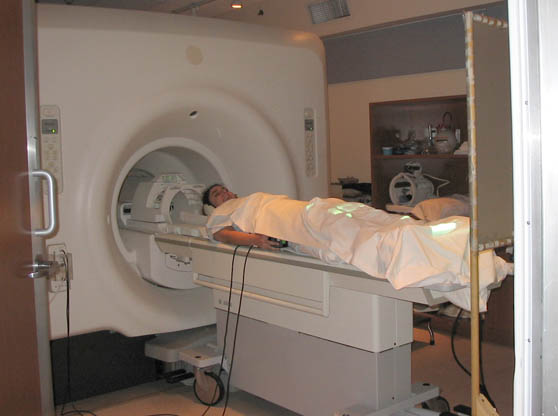 Yes that's me, going in for fMRI when I volunteered for a neurology study at Sunnybrook hospital. I was in there for several hours on several occasions. I made a lot of notes on what it's like to be inside the scanner, but we'll save that for another day. I'm auditing a class called "Introduction to fMRI." Disclaimer in case anyone winds up here because they are looking for actual neuroscience: I'm not a scientist and I don't have a fucking clue what I am doing! Our teacher says that the MRI scanner is not a black box. He wants his students to be able to explain how it works. So here goes, in my own words. If you have any self respect, you will not quote me on this. MRI stands for Magnetic Resonance Imaging. It used to be called NMR, Nuclear Magnetic Resonance, but they changed the name in the 70s because people at the time were so freaked out by nuclear technology of any kind. An MRI scan produces a static, anatomical image of the brain. The 'f' in fMRI stands for functional. fMRI scans are series of static images that show changes in brain activity over a period of time (like animated gifs). Anatomical MRI scans are usually at a higher resolution than fMRI scans, because the scan itself can take longer. The basic unit in these digital images is a voxel, which is like a 3D version of a pixel. Voxels can be bigger (low rez) or smaller (high rez) depending on how much time you take. Okay. 1) How do you use magnets and radio frequencies to collect data about someone's brain? 2) How do you specify exactly what you want to measure within the brain? 3) How do you translate your data into an image, or series of images? I can almost barely manage to discuss the answer to 1; I have even less of a grip on 2; we're just getting started on 3 and so far it is just plain mind-boggling. Shall we begin? 1) The scanner contains a really big, really powerful magnetic coil that is always on. When someone's head is inside this static magnetic field, the protons in their hydrogen atoms tend to "spin" together in one direction. Spin is a quantum term and doesn't really mean spin like we experience it. This is the bit where Richard Feynman would say something like "if you think you understand it you don't understand it." So just think of spin as a bit of a metaphor, but one that's fairly apt. Anyhow, a lot of the protons get lined up (the stronger the field, the more alignment). This is the state that they need to be in to get measured. The scanner also contains radio frequency (RF) coils that can be turned on and off quickly. Once the protons are lined up because of the magnet, the RF kicks in and flips some of them into higher energy states. When the RF is switched off, the protons flip back down to the lower energy state. This switching back down is a release of energy (the exact same amount of energy that the RF coils introduced). This means that each proton that is shifting releases a photon, create a radio frequency. The scanner also has a set of RF detector coils that pick up the frequency and thereby notice when the photons are released. That's the data. (Some scanners use the same RF coils to both induce and receive the frequencies, some have separate coils, but in either case the RF is always the same coming out as going in). 2) This bit is super technical and I'm unable to fully digest it. Here's what I've got. The magnetic and RF fields are not uniform, but gradient, meaning that they change along a spatial plane. So different frequencies can be correlated with different physical locations, ie: the field is passing through somebody's physical head, and the field is different, and producing different effects, in different areas of the brain. As mentioned above, everything happens within the very strong, constant static magnetic field. In order to isolate a slice of the brain you need to set the RF field that you turn on and off to a specific range of frequencies. That way the only information coming back at you will have to be from the slice that resonates at that range of frequencies. That's 1 dimension. In order to get 2 more dimensions you need to do 2 more things. One is that you introduce another field in order to make the changes in the protons' spin dependent on their location. This is called frequency encoding. I don't get how or why this works, but what frequency encoding does is give you another dimension. So now you've got both a horizontal slice, and a vertical range of behaviours across that slice. The other thing you do is called phase encoding. This involves applying yet another field, perpendicular to the other two. I'm not sure, but I think this bit is temporal. So for phase encoding you apply a bunch of different fields in sequence and watch how the protons change. Anyhow. Once you do slice selection, frequency encoding, and phase encoding you get specific 3D data. One important piece of this is a mathematical thingy called the Fourier Transform. Again, I'm in way over my head, but as I understand it, the data that's coming out of the scanner is like a resonant harmonic of all the various frequencies combined into one sine wave. Fourier Transform is a way of looking at that wave and breaking it down into its component frequencies. Or vice versa, or both. I think you can use Fourier Transform to combine frequencies into a single wave and to break them out of a single wave. 3) Okay. Now that I'm totally lost, on completely shaky ground, let me continue. The first representation of the data, before it shows up in "image space" is in "k-space." Whoo! K-space is cool and it looks like some kind of cosmic event. K-space contains all the spatial frequency data from the scan. 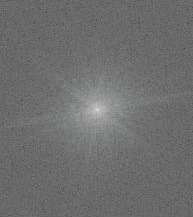 Depending on what sections of k-space you draw information from, you will get different images of the brain at different contrasts, at different resolutions, and/or in different segments. In our next class we will be learning about "the sequence of events (gradients, RF) used to traverse k-space in order to read an entire image." If I can find my way back out, I'll try to make a report. |
|
I'm auditing a class called "Introduction to fMRI." We are using a freeware digital imaging program called FSL (supposedly pronounced "fossil.") Disclaimer in case anyone winds up here because they are looking for actual neuroscience: I'm not a scientist and I don't have a fucking clue what I am doing! Homework: Find the maximal dimensions of the brain along each of the three cardinal axes (front–back, left–right, and top–bottom). Based on your measures of brain dimensions, estimate the total volume of the brain. Because the brain is not a rectangular prism, you will have to make assumptions about its shape within your calculations. 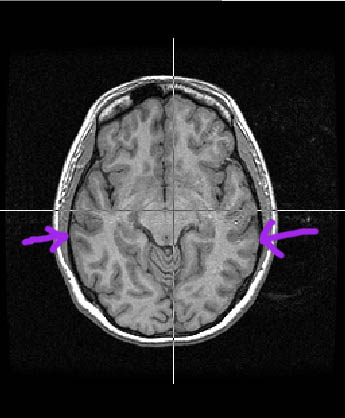 AXIAL VIEW • left–right at widest points: 13.4 cm 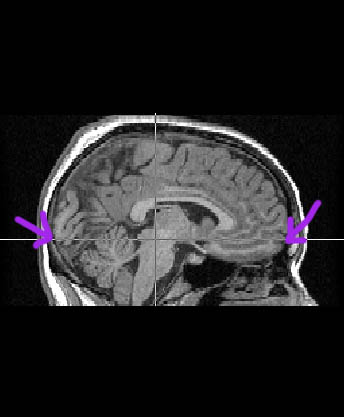 SAGGITAL VIEW • front-back at longest points: 16.3 cm 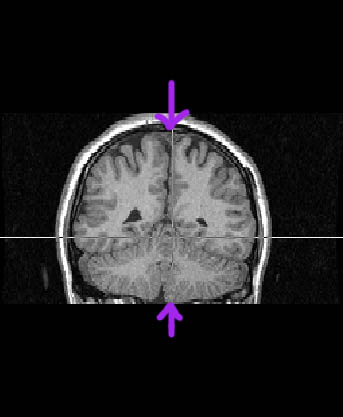 CORONAL VIEW • top-bottom at highest & lowest points: 10.7 cm I calculated the volume as if it was box, using the slices to get the maximum measurements of length, width & depth. I estimated that the area at the bottom/back (cerebellum, etc) is about 1/6 of the total, and about the same amount is missing from the bottom front. So I subtracted 1/6 from the total. 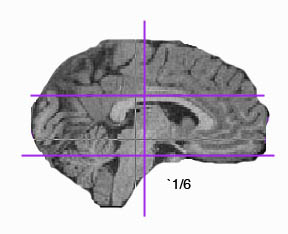
Then I visualized/guessed that if I had a box built to my new dimensions the brain would probably fill about 80% of it. So I took 80% of my new total and it came to 1552 cc. 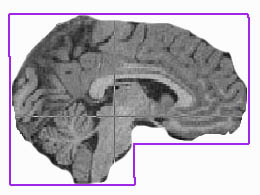 I looked up average brain volumes on the internet and apparently they tend to be between 1300 and 1500 cc. So I'm thinking 80% was probably a bit too generous. OMG I love this class! But thank Christ I don't have to hand in my work. |
Bearnini.com's homepage (via today and tomorrow)
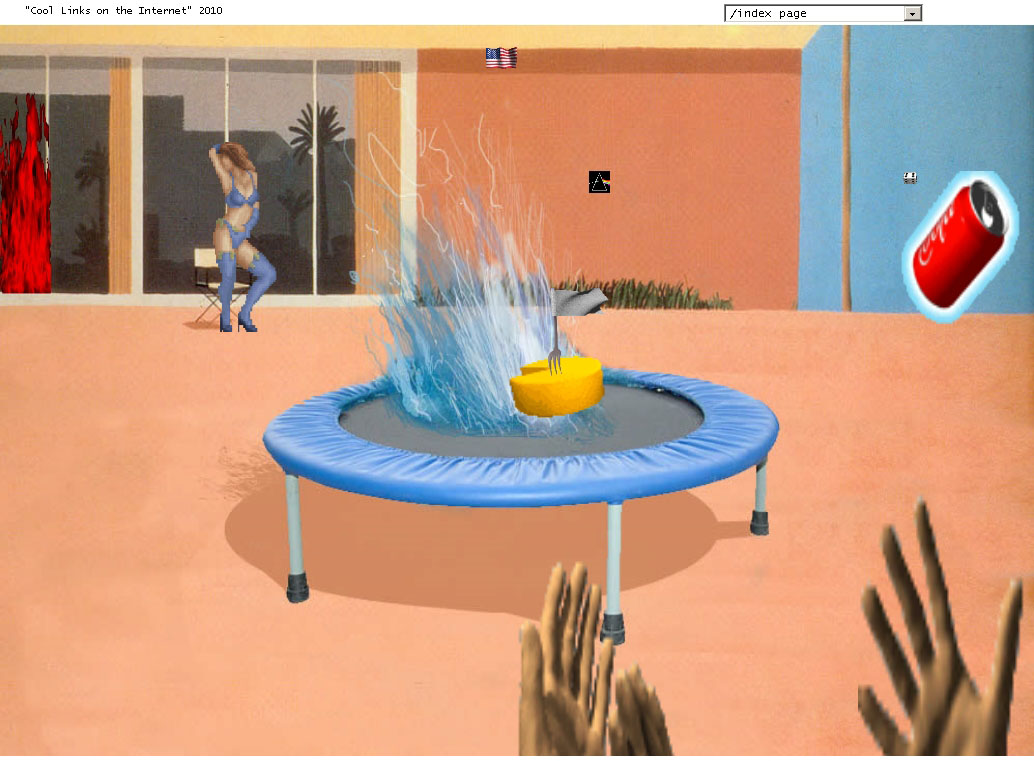
Click through image for animation
Out of Site Contemporary Art Works on Queen Street West curated by Earl Miller Oct. 2, 2010. (Nuit Blanche night)

An Te Liu - Ennui Blanc digital mock-up
More from Murray Whyte.
(I do appreciate that Earl sent me an image to prevent me from making up shit like I did last year)
Sunday - The Forgotten Rebels
Surfin' on Heroin
Rock N' Roll Is A Hard Life
David Hoffos - Scenes from the House Dream at the MOCCA 952 Queen Street West Toronto. Until Dec. 31, 2010.
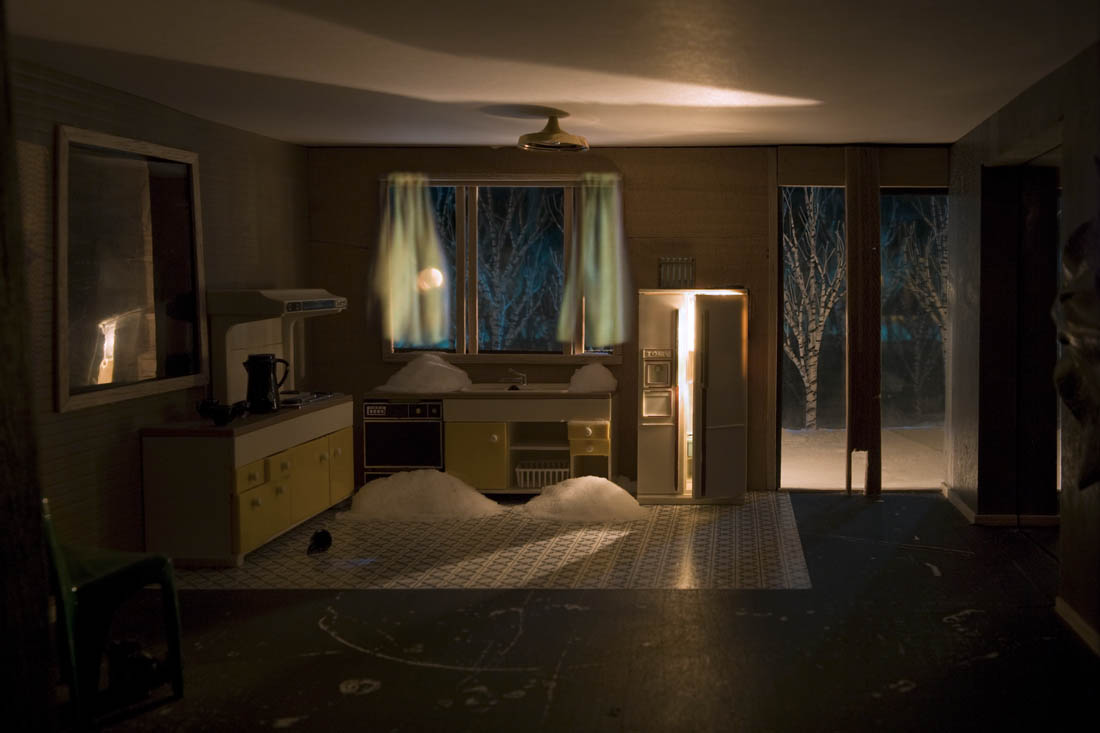
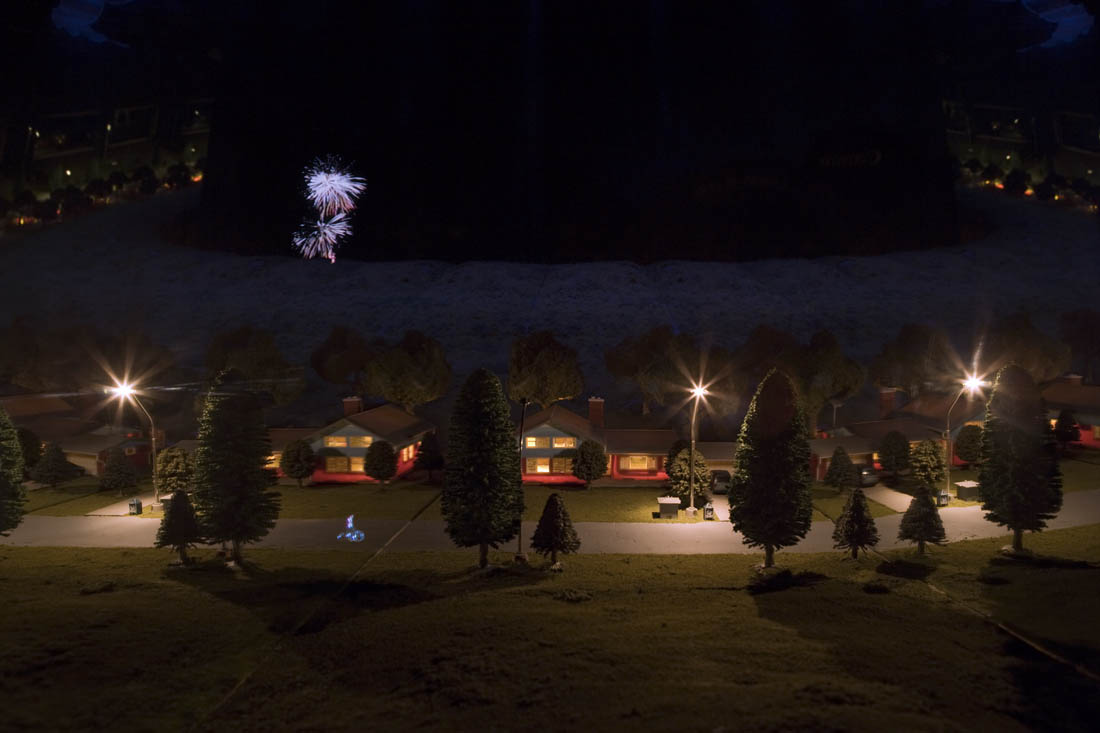
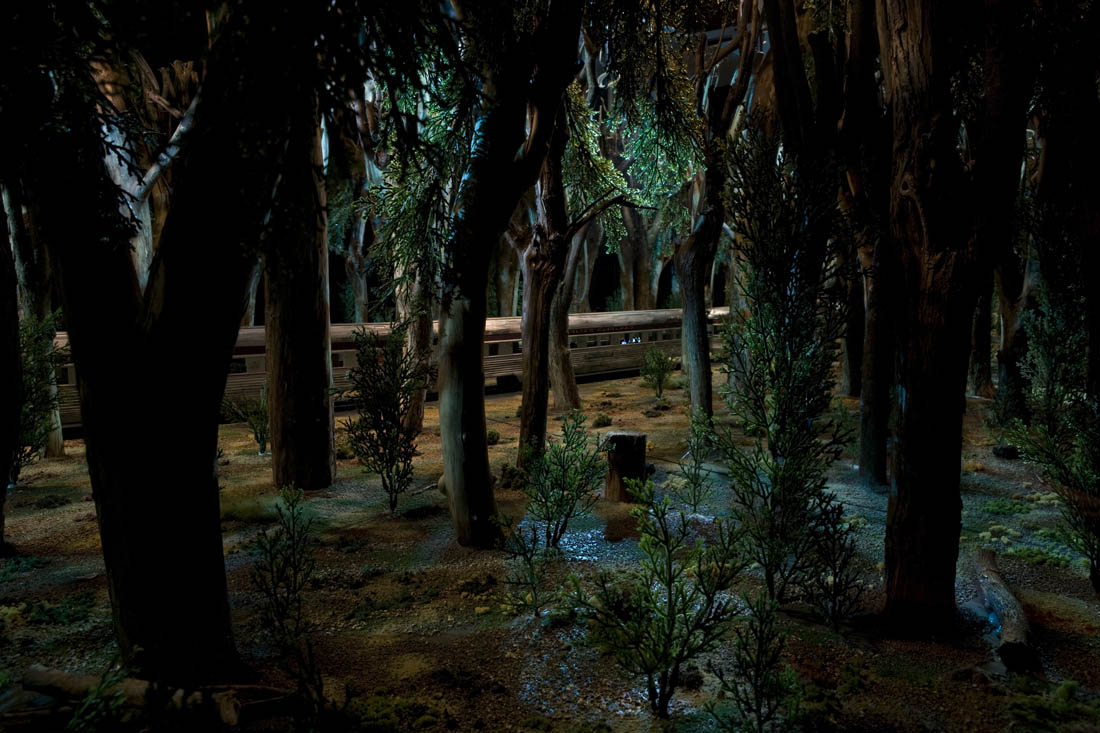
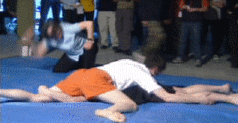
My [IMG MGMT] essay has been posted on Art Fag City.
Sarah Cale
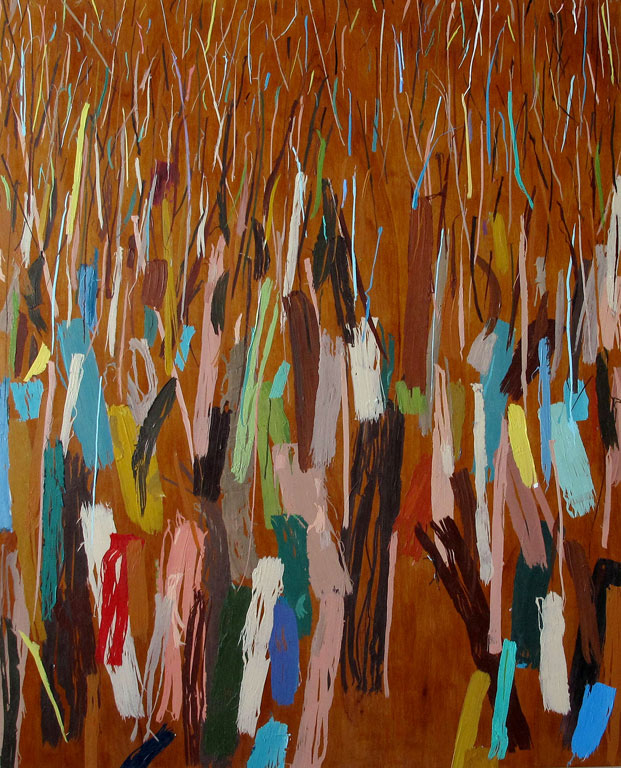
Pelt 2010 acrylic on board 60" x 48"
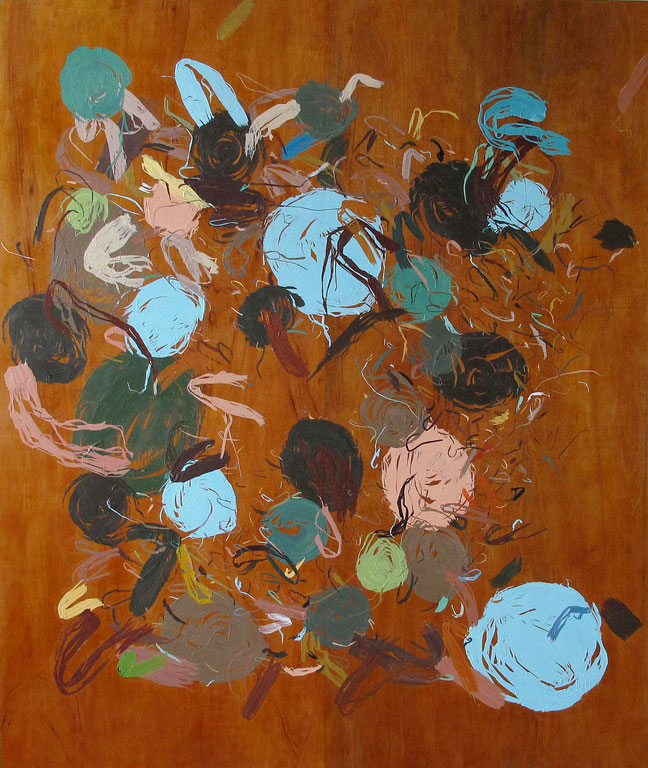
Nausea 2010 acrylic on board 72" x 60"
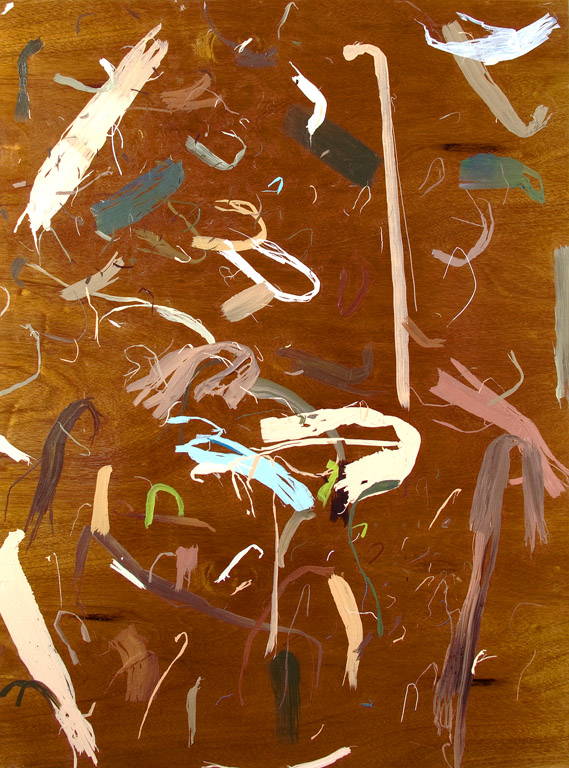
Drift 2010 36" x 48" acrylic on board
From art institutional washrooms around Buffalo for Beyond in Western NY
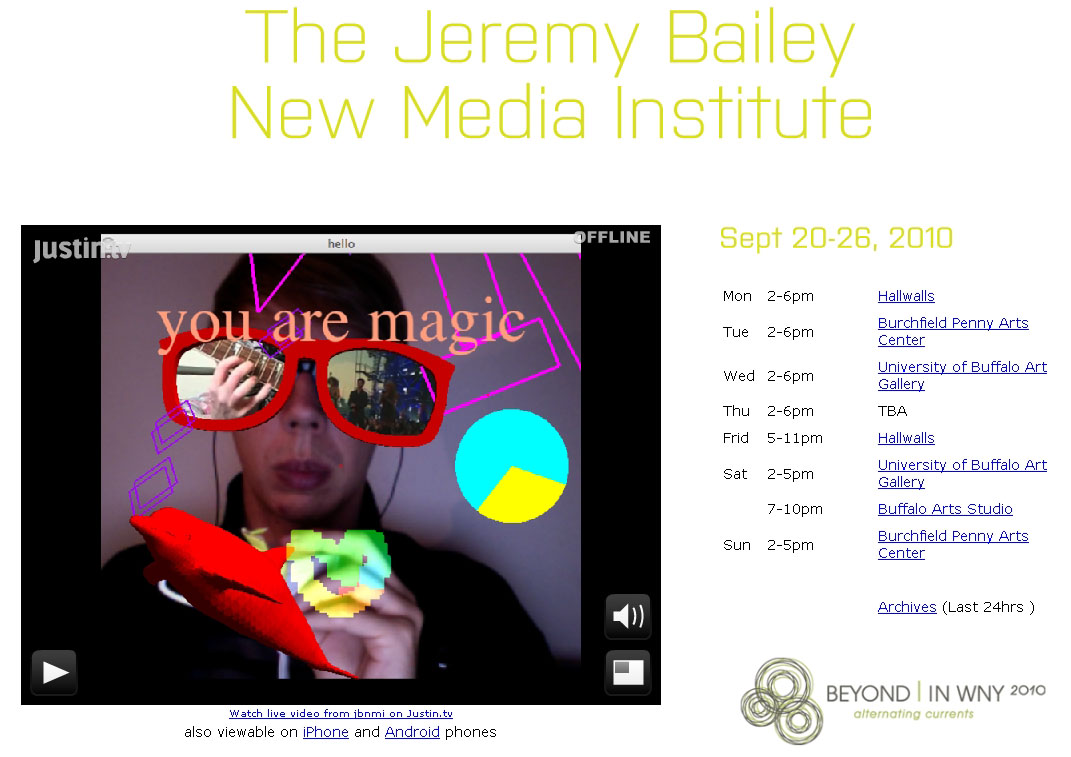
(Click through screen shot for actual links)
Sunday - Wanda Jackson
Fujiyama Mama
Hard Headed Woman
Sparklin' Brown Eyes
Yam Lau & Michael Yuen at The Donkey Institute of Contemporary Art (DICA), Beijing


From DICA Manifesto:
The Donkey Institute of Contemporary Art (DICA) is an initiative dedicated to supporting experimental contemporary art on the back of a donkey. Established in the Beijing summer of 2009, DICA demonstrates a donkey’s spirit of steadfast oblivion. The DICA and the donkey counter all forms of calculated intelligence, promotion and profit making within the market place of contemporary art. They do so with the slowest possible speed, the most idle tactics and wandering work ethics.
Obstinate, dumb and proceeding on blind faith, DICA meanders throughout cities to meet its potential audience, whoever that might be. Yet, DICA makes no claim or appeal for recognition in these encounters. The institute lives by the charm and rhythm that is unique to the donkey’s soul. In this sense, DICA is the most inhuman and radical fulfillment of the avant-garde. It posits an almost complete sort of “standing-still” that refuses to concede to anything.
Princess Hijab


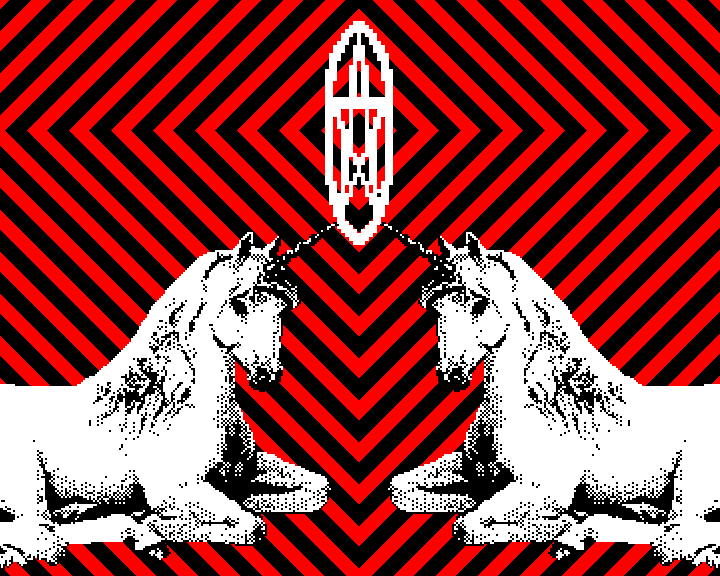



The comment thread of a recent Art Fag City IMG MGMT essay on relational aesthetics and 4Chan has set me off on a tangent: I really think it's time to stop thinking of digital media as immaterial. The whole physical art/non-physical art distinction is a big red-herring. We are accustomed to thinking of vision as something external to our bodies, and therefore when we interact with something visually, we can think of it as "virtual" in a way that we would never ascribe to a sensation of touch or smell. But vision is just as much a physiological process as the other senses. And vision is unique in that many of the components of its sensory organ (the eye) are actually comprised of brain cells. It's like our eyes are little bits of brain, sitting in the front of our heads. It doesn't get much more visceral than that.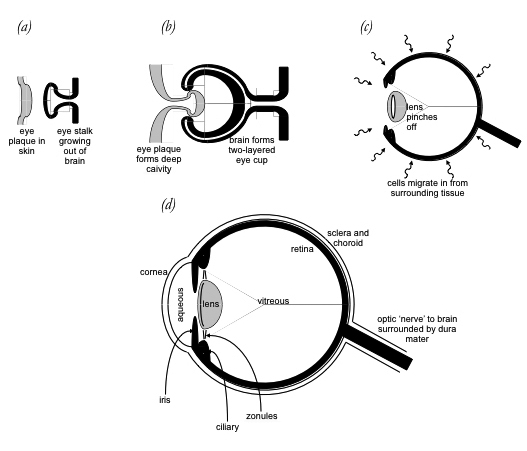 The development of the eye, from Beyond The Zonules of Zinn by David Bainbridge (p.146) Here's something that David Bainbridge has to say about the iris in his brain anatomy book Beyond The Zonules of Zinn. ...when you are staring lovingly into somebody's eyes, you are actually staring at the perforated frontmost extension of his or her brain, which I admit does not seem quite so romantic. Yes, the iris is brain — the window on the soul after all. Admittedly the iris is an unusual part of the brain. Beautiful pigmentation led to its name, which means "rainbow." Also, it forms its own instrinsic muscles to open and close the pupil, and so it is the only part of the brain that can move itself. (p.147) Note: There are lots of other reasons besides eyes to drop the whole immateriality-of-digital-media idea. A simple one: the material effects of e-waste on the environment. A complicated one: the myth of immateriality fosters misleading utopic/distopic notions of imagery and content that are capable of propagating themselves, spontaneously reproducing in some kind of ether-type netherworld (so-called virtual space). It's very Cartesian, as if the internet is supposed to operate according to different physical laws from everything else. |
Songs referenced in the novel 'Chronic City' by Jonathan Lethem:
(VB via SM).
| Found Art: Model Predictions of Visible Distortion This is one funny project if you are used to looking at low-rez digital images from an aesthetic point of view. These computational neuroscientists from NYU are working on a model that can predict whether or not an image will appear distorted to the human eye. They don't talk much here about why this kind of modelling is valuable, but I can imagine there are a quite a range of possible uses, not the least of which being a step in the ongoing project of technologically simulating the human brain. But the surface logic of the demo (to a lay observer like me) is so back-asswards that it's extremely cute. There's a jpeg of Einstein, pretty good resolution. Then another that's somewhat compressed and a third that's super pixelated. These images are presented to the model, which simulates some of the neurological stages of vision but mashing different kinds of data sets. See a graph & explanation of the model. The results are blurry jpegs! Yay! And these blurry jpegs tell us whether the original jpegs will appear blurry or not. SO cute. It's totally not an art project, but if it was it would have all the self-reflexive tautology of 70s high-conceptual art combined with the artist/activist DIYtechnology-for-DIYtechnology's-sake aesthetic of online art in the 90s. See the results. |
|
Traffic: Conceptual Art in Canada 1965–1980 September 11–November 28, 2010 (more details below) (The exhibition will travel across Canada in 2011–12) Look at this list of artists! Conceptual art in Canada...whoo-hoo! Vito Acconci, David Askevold, John Baldessari, Bruce Barber, Marcella Bienvenue, Robert Bowers, Wallace Brannen, Tom Burrows, James Lee Byars, Eric Cameron, Colin Campbell, Ian Carr-Harris, Tim Clark, Robin Collyer, Carole Condé and Karl Beveridge, Michael de Courcy, Sylvain Cousineau and Francis Coutelier, Gary Coward, Kenneth Coutts-Smith, Stephen Cruise, Greg Curnoe, Max Dean, Tom Dean, Jean-Marie Delavalle, Jan Dibbets, Christos Dikeakos, Graham Dube, Brian Dyson, Dean Ellis, Michael Fernandes, Gerald Ferguson, Robert Fones, Vera Frenkel, Jeff Funnell, Charles Gagnon, Yves Gaucher, General Idea (AA Bronson, Felix Partz, Jorge Zontal ), Raymond Gervais, Dan Graham, Rodney Graham, John Greer, Hans Haacke, Noel Harding, John Heward (in collaboration with Alex Neuman), Douglas Huebler, Image Bank (Michael Morris and Vincent Trasov), Richards Jarden, Bill Jones, Donald Judd, Pat Kelly, Garry Neill Kennedy, Roy Kiyooka, Robert Kleyn, Joseph Kosuth, Michèle Lalonde, Suzy Lake, Gordon Lebredt, Les Levine, Glenn Lewis, Sol LeWitt, Lee Lozano, Ken Lum, Duane Lunden, Don Mabie, Allan MacKay and Lionel Simmons, Arnaud Maggs, Brian MacNevin, Barry MacPherson, John McEwen, Robin McKenzie, Albert McNamara, Ian Murray, N.E. Thing Co., Gunter Nolte, Dennis Oppenheim, Bruce Parsons, Andy Patton, Harold Pearse, Rober Racine, Yvonne Rainer, Clive Robertson, Ellison Robertson, Martha Rosler, Tom Sherman, Rebecca Singleton, Robert Smithson, Michael Snow, Jeffrey Spalding, Lisa Steele, Françoise Sullivan, David Tomas, Serge Tousignant, Bill Vazan, Bill Vazan with Ian Wallace, Robert Walker, Jeff Wall, Ian Wallace, Theodore Wan, Douglas Waterman, John Watt, Lawrence Weiner, Irene F. Whittome, Joyce Wieland, Martha Wilson, Paul Woodrow, Jon Young, Tim Zuck Conceptual art gets such a bad rap. In some circles, the phrase has become synonymous with boring, didactic and thinky. But lots of those artists in the 60s and 70s were exploring aesthetics in a way that was really funny, sort of dangerous and exciting. One thing that has remained very important to me about the movement(s) is the assertion that artists can understand and manipulate the contexts of reception of their own work. This is something that young curators, critics and art historians really need to be reminded of, especially in the current climate when so many people are scrabbling around trying to locate and claim some form of intellectual authority. Here's some good snippets from the exhibition's "background" information sheet. Both in Canada and globally, Conceptual Art is indelibly marked by the 1960s post-war political unrest that gave birth to anti-war protests and the student, womenʼs, civil rights and gay liberation movements. It was also informed by the emergence of new information technologies such as the television, the fax machine and the computer. Rebelling against the idea that art was a matter of individual expression, special skill, or purely visual and formal concerns, the conceptual movement emphasized art as ʻidea,ʼ in what has come to be known as artʼs linguistic turn.It's a really good time for a comprehensive Canadian history show on this topic. Especially in light of current discussions about immaterial art emerging in the context of online art practices (as well as the dangers of historical erasure from a certain American art critic who is nostalgic about "dominant objects.") Traffic: Conceptual Art in Canada 1965–1980 opens this weekend at the University of Toronto art galleries: Friday, September 10, 2010 |

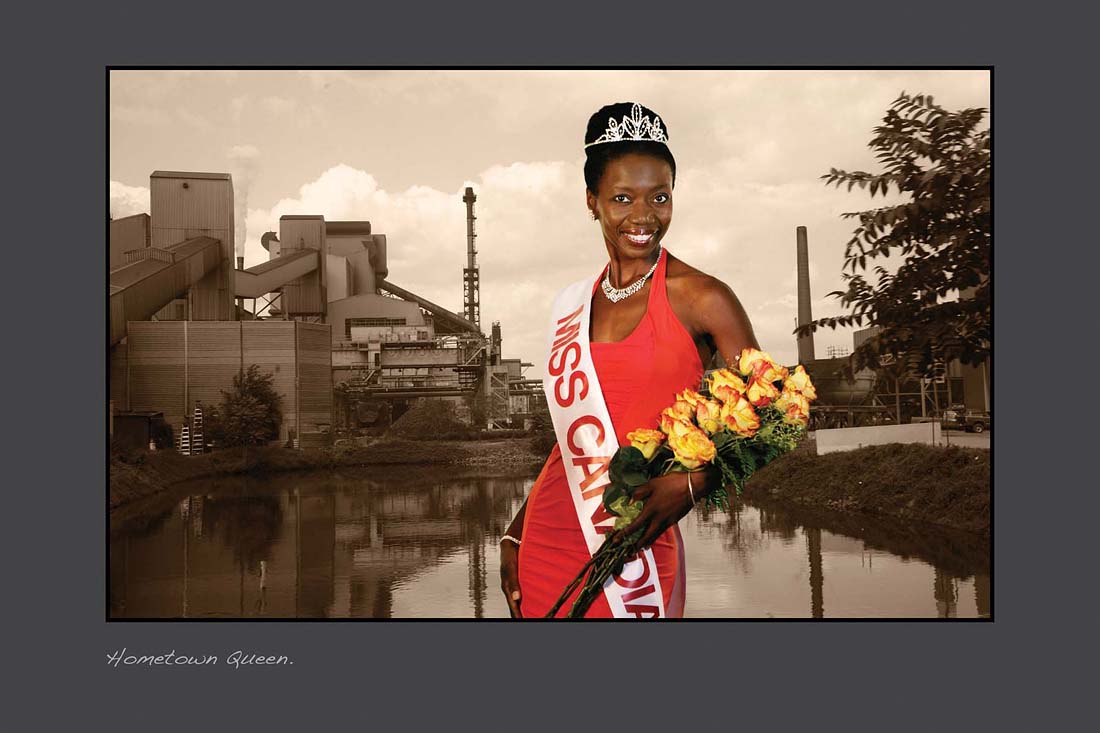
Camille Turner A golden horseshoe of possibilities 2010 Digital print, 12" x 18"
(RE)Visions with Sandra Brewster, Stephen Fakiyesi and Camille Turner at The Print Studio, 173 James Street North, Hamilton, ON,
September 10 – October 23, 2010
Curated by Sally Frater
Opening reception: Friday September 10, 7:00 pm – 10:00 pm
Featured performance by Miss Canadiana beginning at 7:30 pm
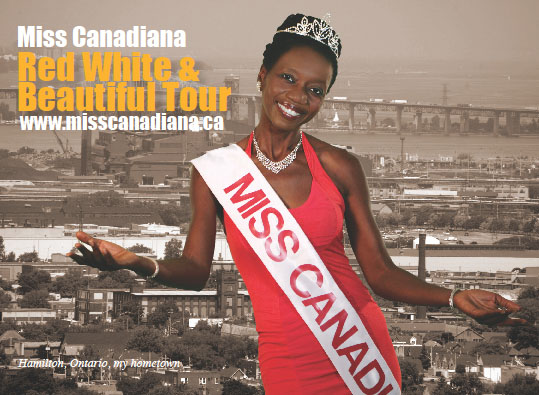

I see your little plastic mounties, Anthony Easton, and I raise you several pairs of shiny new RCMP riding boots.
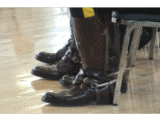

Sunday - ISIS
April Fool
Do the Football
Ain't No Backin' Up Now
email from Joe McKay:
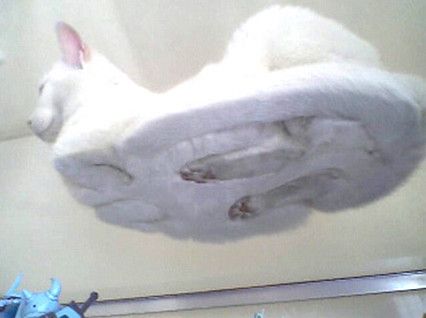
A few more notes on Adaptation at the Power Plant. Overall I liked the show (despite installation problems). Power Plant always does something big and broad and free in the summer, and animal/human interaction is not a bad theme for a blockbuster. I talked about Cory Arcangel's video the other day (fractious thread). I'd like to just mention a couple of other artworks that I really liked.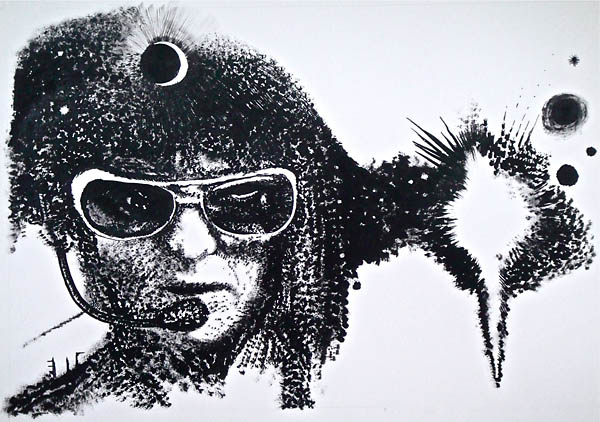 FASTWURMS, Cat vs Dragon, 'meow',, 2010. ink on paper FASTWURMS based their installation on one of the best sci-fi short stories ever, "The Game of Rat and Dragon" by Cordwainer Smith. In the story, military human astronauts pair up with cats into telepathic teams that patrol the territory in outerspace to keep out "dragons." Each of the cats and humans have their own personalities, and some jive better than others. Our protagonist is kind of in love with one of the cats, and when they work together they make a killer team. FASTWURMS did fantastic black and white illustrations for the story and mounted them on the wall with the full text. In the age of ubiquitous cat imagery, FASTWURMS' cat art stands out because the cats aren't presented as ciphers for projections of human desire, but as powerful personalities in their own right . As witches, they take interspecies communication very seriously. But taking something seriously doesn't mean you can't have fun and kid around! Never cynical, but almost always ironic, these two know how to play with pop culture and sci-fi tropes to make strong assertions about the ways that humans and animals are entangled together with forces of nature/culture. The premise requires a suspension of disbelief on the part of the audiences, but FASTWURMS' love of kitsch makes that process easy. 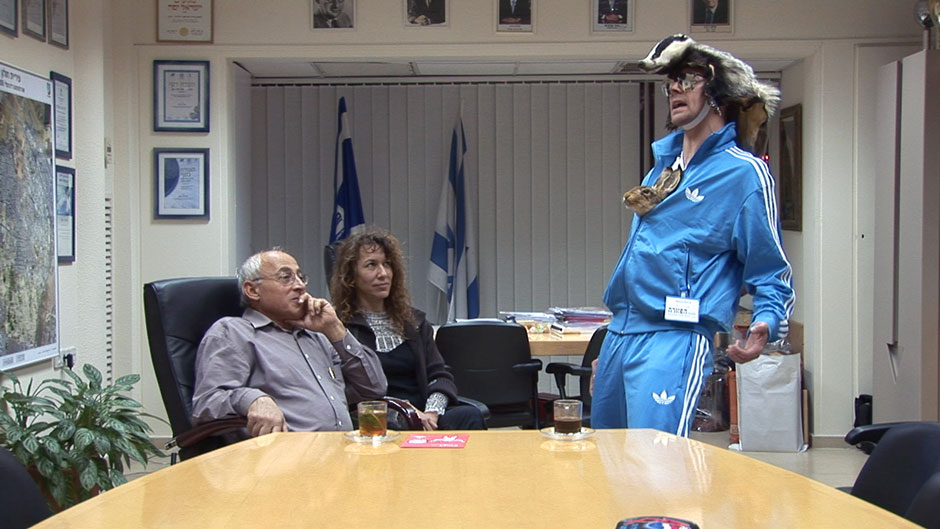 video still from Marcus Coates' The Plover's Wing, A meeting with the mayor of Holon, Israel The British artist Marcus Coates also demands a suspension of disbelief as he channels animal spirits. In contrast to FASTWURMS, he really ramps up the uncomfortable tension between spoof and sincerity, making the suspension of disbelief a much more difficult decision. The video that impressed me the most was The Plover's Wing, A meeting with the mayor of Holon, Israel. Coates, wearing a dead badger on his head with a dead rabbit head poking out of the zipper on his track jacket, meets with the mayor of Holon. Through an interpreter, Coates offers his services as an animal spirit medium, and invites the mayor to ask him a question that has been bothering him. The mayor says he has a problem with youth violence in the city and he wants to figure out how to solve it as a means of working toward a less violent future in the Israel/Palestine conflict. Coates asks the mayor to move his chair back a little, and then goes into a long, loud trance, shaking and whooping, crouching and chirping and croaking. Playing the fool in some ways, he is also very convincing, demonstrating a performative depth of commitment to the exercise. He comes out of his trance eventually (to the apparent relief of the mayor and the interpreter, who is trying hard to keep a straight face), and calmly gives a quite cogent interpretation of his journey into the animal world. The mayor listens politely, and at the end offers feedback to the effect that he thinks Coates is sincere and not just playacting. I think so too. The video reminded me of Kristin Lucas performances where the artist inhabits a space that is difficult to accept. In the case of both Coates and Lucas, the work is much richer if the viewer can accept the terms as stated, and allow themselves into a suspension of disbelief, playing along with the artists' own commitment to the scenarios they present. Coates may be nuts, but I don't think he's scamming. And if he is, who cares? The concept is great, and better if you buy into it, at least for the duration of the performance. Both Coates and FASTWURMS push the limits of what audiences might normally accept as interspecies communication, tempting incredulity and teasing the realm of the supernatural. But both are also firmly rooted in the artworld, where paradoxical meanings have long been accepted. It's not necessary to make a definitive declaration that Coates is really channelling animal spirits, or thatFastwürms really communicate telepathically with cats. It's enough to respect the sincerity with which the artists propose the premise, and, at least temporarily, engage with the work on those terms. And interspecies communication is something well worth exploring these days, when social networks are fetishized as anonymous abstract structures in and of themselves, human brains are likened to computers rather than organisms, and climate change and species extinctions are sad and urgent facts of life. |